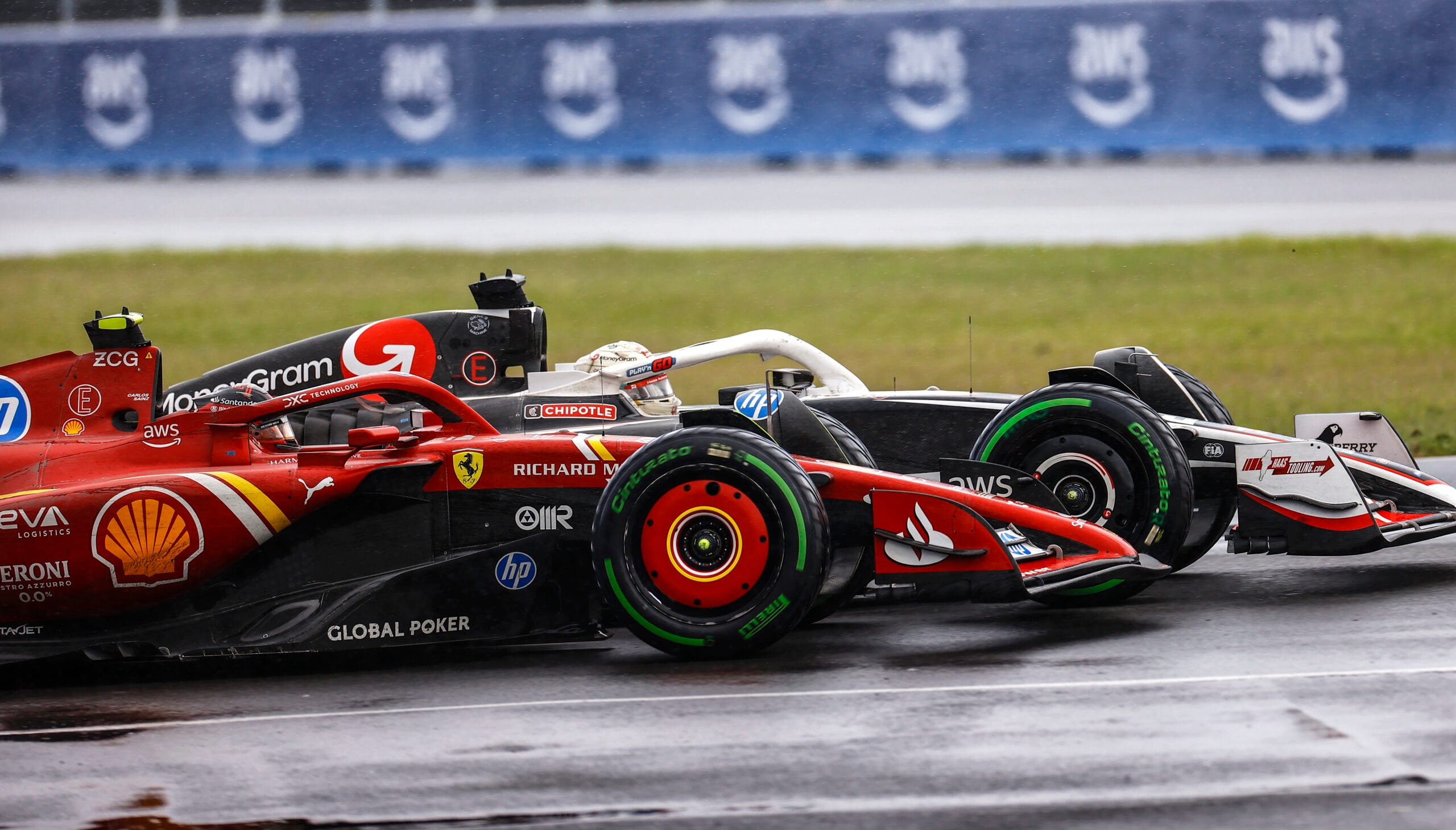Firstly of the season, the Italian-American workforce was satisfied it might play the position of the backmarker. Nonetheless, in 2024, Haas finds itself aiming a lot increased than mere survival, reorganizing and equipping itself to dream of extra bold targets, regardless of remaining the smallest workforce on the grid. Higher human useful resource administration has resulted in a extra cohesive automotive and, for the primary time in its historical past, the power to hold out constant improvement all year long.
The start line
The novel change for Haas in 2024 lies in making a automotive that performs higher in races somewhat than simply in qualifying. The VF-24 represents a shift from the 2023 challenge, which was unpredictable and required frequent steering corrections, rapidly degrading its tires. The brand new automotive exhibits vital enhancements in stability and drivability, with a way more predictable rear finish, benefiting race tempo consistency.
Two pillars underpin this revolution, certainly one of which is mechanics. The VF-24 options up to date Ferrari suspensions, with the rear adopting a brand new idea that integrates a part of the mechanics into the gearbox casing. “I feel they’ve made an incredible step ahead,” commented Technical Director De Zordo a couple of months in the past. “It positively works higher, and the drivers are a lot happier this 12 months.” The advantages lengthen to aerodynamics, with the lowered dimension of the gearbox casing releasing up house within the diffuser space.
Aerodynamics is the opposite basic pillar of the revolution, as famous by Nico Hulkenberg: “It’s all due to the aerodynamic platform; it’s the place we made a very powerful modifications and the most important enhancements over the winter. This gave us the consistency and efficiency to attain outcomes.” The outcomes justify the technique chosen in 2023 when Haas rapidly realized that the previous idea had reached its limits. The workforce then determined to discover a brand new philosophy, partially previewed with the year-end bundle in Austin. Greater than within the bodywork with downward-sloping sidepods, the change lay in how the automotive was made to work, gathering priceless data to completely embrace the brand new idea within the 2024 challenge.
Constant improvement
The workforce’s success additionally stems from its capability to reinforce its basis with steady updates. “It’s the primary time we’ve made progress throughout the season. In earlier years, we began with an excellent automotive however merely didn’t enhance,” commented Magnussen. In previous seasons, Haas produced one or two improve packages a 12 months, usually ineffective. In 2024, the updates are extra quite a few and useful. “It’s one thing we’ve all the time struggled with previously, however this 12 months we’ve made a number of enhancements, and kind of all of the steps we’ve taken have met expectations,” confirmed De Zordo.
The principle improvement focus is medium- to high-speed corners, the place the VF-24 suffers from an absence of downforce and a few unpredictability on the entrance. “It’s been like this for the reason that starting of the 12 months, and we’ve labored in that course with the updates launched from China onward. GPS knowledge from rivals’ efficiency analyses present there’s been enchancment,” famous De Zordo in late June. He referred to the bundle launched between Shanghai and Miami, adopted by the one in Silverstone, the place Haas scored 8 factors. A brand new entrance wing debuted in Zandvoort shortly after, two months earlier than the ultimate replace bundle arrived in Texas. These updates yielded outcomes, with 15 factors collected between Austin and Mexico Metropolis.
Haas’s give attention to creating for quick corners signifies a challenge missing in high-downforce setups however extra environment friendly in low-drag configurations. When adapting to numerous circuits, the workforce determined to capitalize on this power. For the primary time, the workforce developed low-drag aerodynamic packages, a departure from previous seasons once they merely trimmed current rear wings in a determined try and make modifications.
“This 12 months, we noticed the automotive’s precise effectivity and the place we’re kind of aggressive,” defined Crew Principal Ayao Komatsu. “It was fairly clear which course we should always develop, whether or not for top or low downforce, since our automotive is extra aggressive on the latter sort of tracks. For us, it was a pure determination to develop rear wings for these circuits.” This technique prevented the workforce from creating high-downforce wings, impacting efficiency at tracks like Monaco and Budapest. “It was a alternative we needed to make, being the smallest workforce,” Ayao Komatsu reiterated. Nonetheless, the outcomes justify the choice, with 6 factors collected between Monza, Baku, and Las Vegas, the lowest-downforce tracks of the season.
A extra cohesive workforce
The automotive’s on-track progress displays modifications throughout the workforce. In 2024, technical management shifted from Simone Resta to Andrea De Zordo, who, alongside new Crew Principal Ayao Komatsu, launched a brand new operational mannequin. Emphasis was positioned on inside communication, encouraging employees journey between the Italian and UK bases to facilitate data switch, benefiting a extra cohesive challenge. “On the design aspect, many issues have improved by way of procedures and employees interplay, permitting folks extra freedom to work. This has enabled everybody to contribute extra successfully,” De Zordo instructed *FormulaPassion*.
Enhancements are evident within the elevated communication between the trackside administration workforce and the design departments. This proximity facilitates optimum setups whereas guaranteeing observe suggestions informs improvement, leading to updates that meet the automotive’s wants. By fostering inside dialogue, Haas has reaped the advantages of a workforce whose departments now work in concord, aligning design with trackside administration.
Wanting forward with Toyota’s help
Essentially the most vital information for Haas’s future is its collaboration settlement with Toyota. The partnership goes past a easy brand on the automotive. This was evident when Ryo Hirakawa, Toyota’s WEC driver, participated within the Abu Dhabi checks, underscoring Toyota’s affect throughout the workforce. Toyota will present experience and improvement instruments, together with invaluable dynamic check rigs for suspension techniques and extra.
“They’ve many amenities that could possibly be helpful to us, comparable to check rigs we don’t presently have, and so they’ll additionally assist with simulation, one other space the place we’re missing,” defined De Zordo. Discussions embody delegating the manufacturing of composite aerodynamic surfaces and conducting TPC checks with vehicles no less than two years previous, aiding the coaching of recent personnel.
The 2024 season is a transparent assertion of intent for Haas, now not involved about mere survival however keen to attain far more within the medium-term future.




